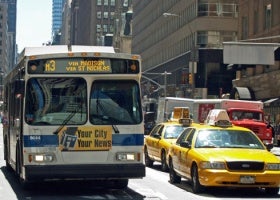 This post is by Sheryl Canter, an online writer and editorial manager at Environmental Defense Fund.
This post is by Sheryl Canter, an online writer and editorial manager at Environmental Defense Fund.
Today is the start of National Public Health Week, and this year’s focus is the impact of climate change on our nation’s health. The health risks from global warming are not distributed evenly, and some people are in more danger than others. Take a look at our article Health and Global Warming: Are You at Risk? Some of the risk factors may surprise you.










 This post is by
This post is by 
 This post is by
This post is by